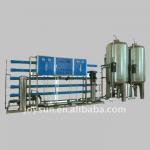Membrane filter 50 0.45
| Place of Origin:China (Mainland) | Brand Name:TJJT | Model Number:50 0.45μ PTFE |

The microporous membrane filter is mainly used for the filtration of mobile phase and samples during the chromatographic analysis, especially for preventing chromatographic column and infusion pump line system and sample valve from pollution. They are widely used for gravimetric analysis, microanalysis, colloid separation and sterility test. The filer membrane made of different materials, such as polyetherdsulfone (PES), nylon6, Nylon66 MCE and polytetrafluoroethylene (PTFE), PVDF etc. can be provided.
PTFE
PTFE membranes are particularly suitable for preparing samples for HPLC analysis. The hydrophobic nature of the membrane also has applications for air and gas sterilization. The membrane is laminated onto a non-woven polypropylene support web for improved strength and handling and can be used at temperatures up to 150ºC.
PTFE is the membrane of choice for use with the aggressive solvents, liquids and gases that can attack other membranes. It is resistant to most acids, alkalis and solvents.
Applications
One of the major applications for the PTFE filter is the clarification of corrosives, solvents and aggressive fluids. This includes the important requirement in HPLC analysis for sample filtration where any solid particles can cause permanent damage to the column. The 0.45µm pore size is normally used.
Mixed Cellulose Ester (MCE)
JintengMCEmembrane filters are modified to offer researchers the lowest binding filters available. Due to the extremely low binding characteristics, these filters provide higher throughputs than competitive offerings and reduce filter changes when filtering proteinaceous solutions.
Because of their unique strength and extremely low binding characteristics, JintengMCEmembranes are ideal for protein and enzyme filtrations, tissue culture media sterilization, cold sterilization, biological fluid filtration and other filtration applications where maximum recovery of proteins is critical.
Features and Benefits:
· Lowest binding material available
· Hydrophilic
· High throughput
· Strength and dimension stability
· Uniform pore structure
Applications:
· Protein and enzyme filtration, sterilization
· Biological fluid filtration sterilization
· Tissue culture media sterilization
· Diagnostic cytology
· Receptor binding studies
· Enhanced recovery of fastidious gram positive organisms

| Packaging Detail:carton |
| Delivery Detail:within 2weeks upon receipt the payment |














